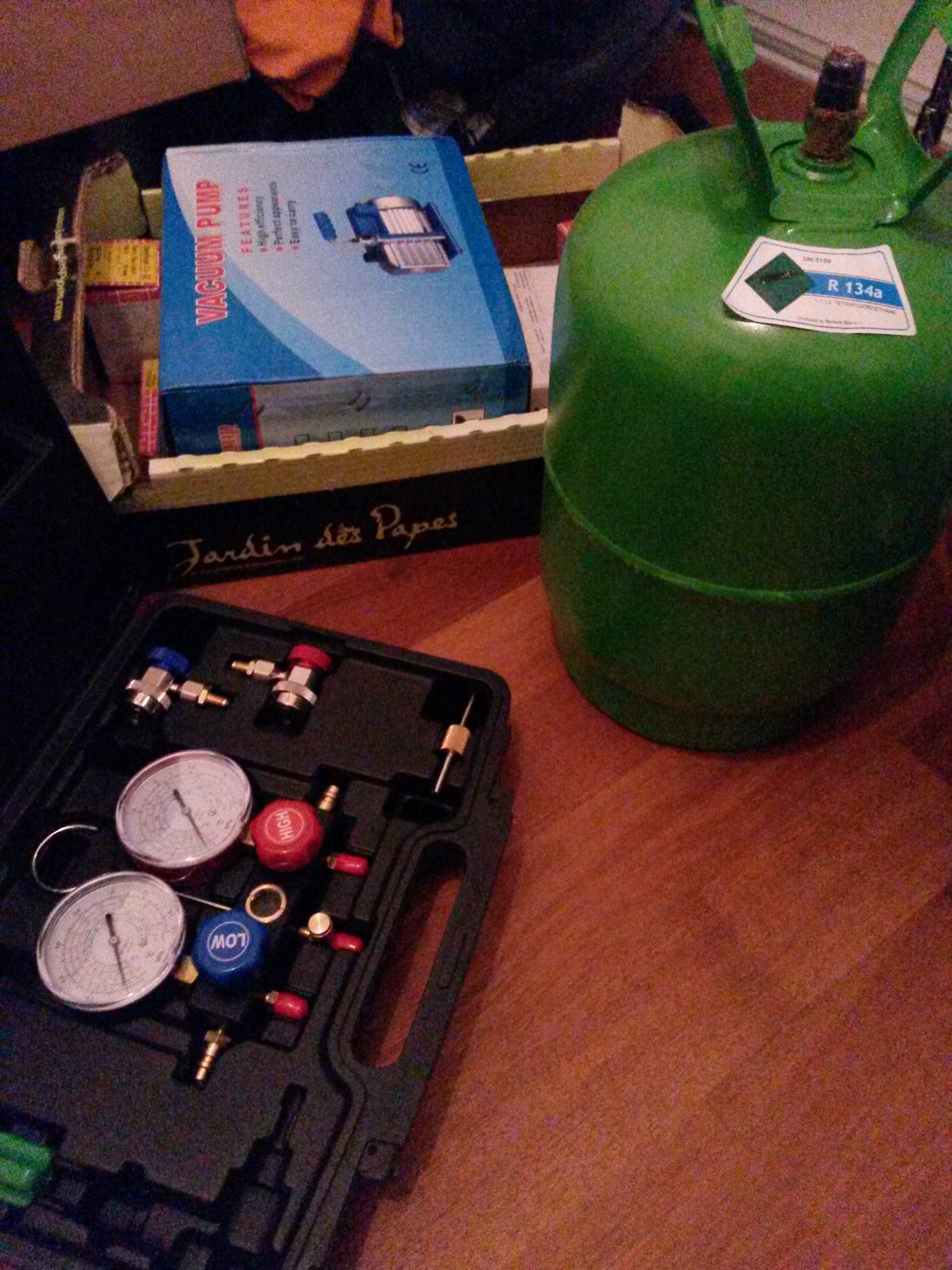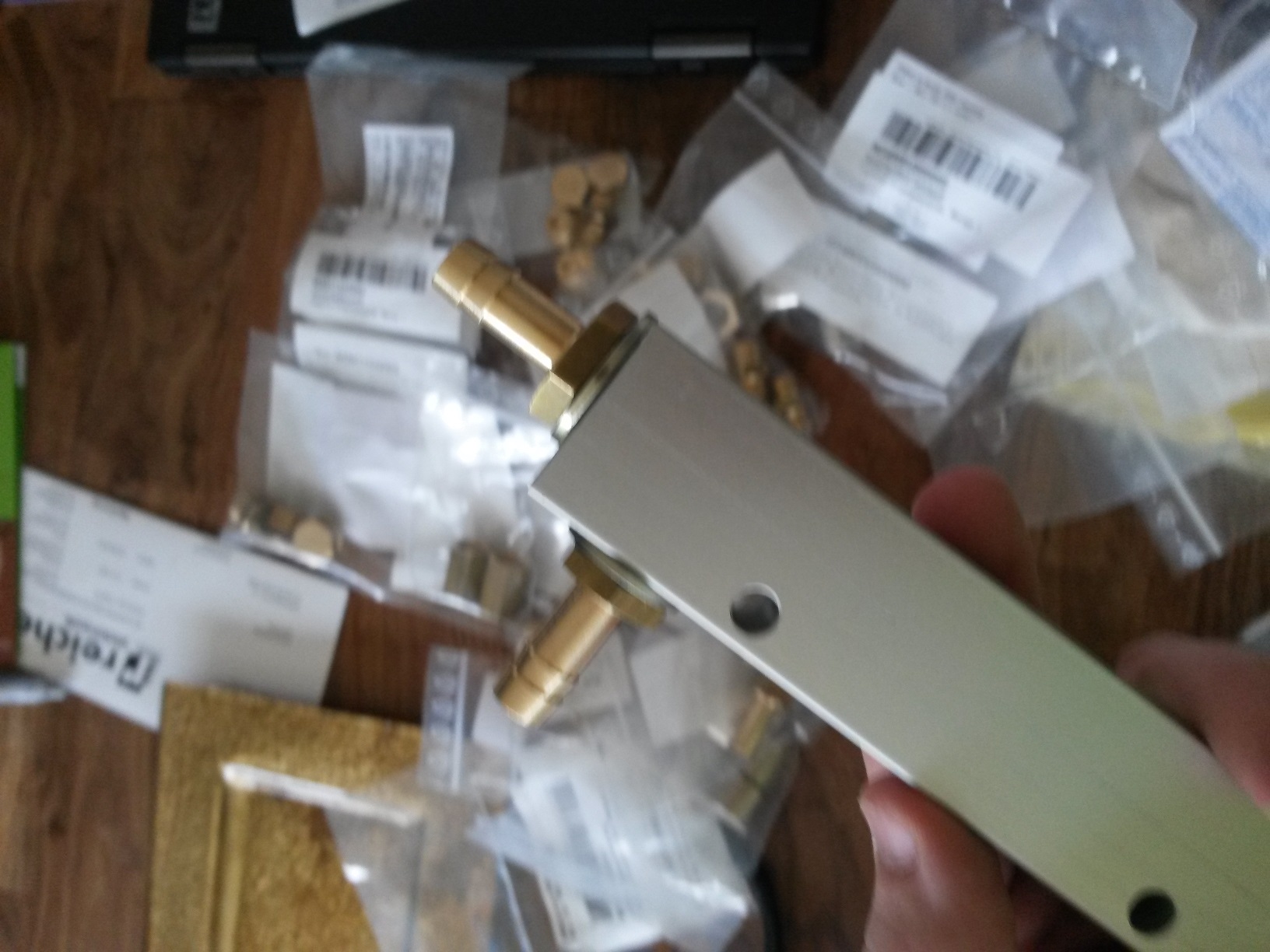Previously. Explaining the pointy idea: Phase Change Cooling
Now to turn theory into reality.
First off. Choosing the "best" coolant.
Looking around there were some choices. Most with various downsides:
- Isobutane
Quite good coolant ... highly flamable and explosive ... bad idea to put near a computer. - Ether
Would work with comparatively low pressures ... flamable and toxic ... err rather not. - Various Refrigerants used in other applications ...
Now those are designed for the cause ... there must be something useful here ... most are mildly to highly toxic though, except one ... - 1,1,1,2-Tetrafluoroethane also known as R134a
I found this to be the best solution. It doesn't need a lot of pressure like R404a and it's, and that's quite rare, not flammable, explosive or even toxic. At least most studies didn't show toxicity ...
I chose R134a to use in my passive phase change cooler. This influenced also what materials I could use for the loop.
R134a is extremely aggressive to polycarbonate for instance. It eats it like candy. So no Plexiglas in my cooler.
Reseaching all this took quite some time. Thankfully there were quite extensive documents on The Internet about the behaviour of the chemicals as well as their material compatibility.
Now one of the most frustrating parts started. I had to "zweckendfremden" like we say in German. To use something for something other than its intended purpose. This would save me a lot of work as I would otherwise have to build all the parts from scratch.
R134a is usually used in automobile air conditioning units. Those use one type of threads for their connectors.
Commercial coolers use another type of threads for their connectors.
Liquid cooling solutions for PC use yet another type of thread for their connectors. Thankfully it's the same used for air pressure hoses.
Finding out about the difference was a nightmare and took what felt like at least a dozen of hours to mash together.
So lets recap what was needed and what I used:
- Can of coolant
Ordered on Amazon. - Manifold to fill in coolant
China (Read Aliexpress) ... - Vacuum pump to remove air from loop
Also China ...

- Vaporizer
Checked if PC Liquid water blocks would work ... probably. The gaskets and metal should be alright as far as compatibility is concerned. What was quite clear though was that high efficiency waterblocks that work for heat exchange probably wouldn't work for phase change. So I chose a simple general use post cooler and not some fancy "Jet Plate" thingy. - Radiator
PC Radiators are great and all ... but I have no idea how much pressure they would withstand before bursting. Sure the same goes with water blocks but those are made of massive chunks of metal or robust plastics, not thin sheets pipes and sheets. Also they are quite expensive for their size.
So I chose to just use what they use in car air conditioning units. They had some quite obscure connectors. I asked a friend to just tap a new set of "G1/4" threads. Still I wasted time and money trying to find the right connectors before doing that. - Hose and fittings
Mostly pressurised air stuff. I chose web reinforced PVC hoses. I really wanted them to be transparent and so far they hold up quite well. Also mostly "G" type fittings. Except for the connectors of the filling port and a filter I bought somewhere. A friend found those connectors for me ... at a shop down the road from where I live and never heard about. Also wasted money and time trying to find it online before asking ...

I chose a huge radiator that would have looked stupid on a retail case ... so next up: Designing The Pentagon Case